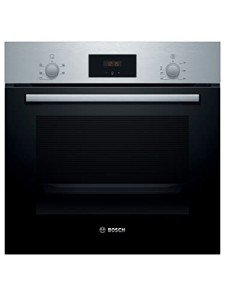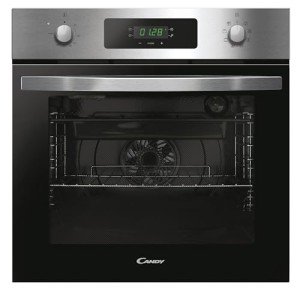Ten Myths About Single Fan Oven That Aren't Always True
페이지 정보
작성자 Kristeen 작성일 25-07-23 01:16 조회 2 댓글 0본문
Understanding Single Fan Ovens: A Comprehensive Guide
Intro
As modern Ovens-day kitchens grow increasingly sophisticated, devices created for effectiveness and performance are at the forefront of consumer interest. One such device that remains popular amongst home cooks and baking enthusiasts is the single fan oven, an electric design understood for its versatility and ease of usage. This short article supplies in-depth details about single fan ovens, including their functionality, advantages, types, and considerations for purchase.

What is a Single Fan Oven?
A single fan oven, also understood as a stove, includes a single cooking chamber with a fan and exhaust system that distributes hot air uniformly throughout the cooking area. This leads to an even cooking temperature level and boosted cooking performance compared to standard static ovens.
Secret Components of a Single Fan Oven
- Heating Elements: Usually situated at the top and bottom, these create heat for cooking.
- Fan: The main feature that distributes the hot air within the oven, promoting faster and more even cooking.
- Thermostat: Regulates the temperature to make sure optimum cooking conditions.
- Control Panel: Provides user interface alternatives for setting temperature levels, cooking times, and modes.
How Does a Single Fan Oven Work?
Single fan ovens run by integrating the heat from the heating components with the air motion created by the fan. The hot air is distributed equally around the food, significantly minimizing cooking time while also enabling lower cooking temperatures.
Advantages of Using a Single Fan Oven
- Faster Cooking Times: The flowing air enables food to cook faster compared to conventional ovens.
- Even Cooking: Food is exposed to constant heat from all sides, reducing the opportunities of irregular cooking or locations.
- Flexibility: These ovens can be utilized for baking, roasting, and even grilling, making them ideal for a large range of dishes.
- Energy Efficiency: By cooking at lower temperature levels and in less time, these ovens might utilize less energy than their conventional counterparts.
- Moisture Retention: The design assists retain wetness in meals, resulting in juicy roasts and baked goods with a light texture.
Types of Single Fan Ovens
When thinking about a single fan oven, consumers may encounter various types based upon features and design. Here are a few typical types:
1. Built-in Single Fan Ovens
- Description: Integrated into kitchen cabinets for a smooth look.
- Pros: Saves counter space, visually pleasing.
- Cons: Higher installation expenses, might need professional assistance.
2. Freestanding Single Fan Ovens
- Description: Standalone systems that can be placed throughout the kitchen.
- Pros: Easy to set up, flexible positioning.
- Cons: Can take up more area, may not blend well with cabinetry.
3. Range Cookers with Fan Ovens
- Description: Multiple cooking alternatives, including a fan oven, integrated in one system.
- Pros: Offers numerous cooking techniques, ideal for enthusiastic cooks.
- Cons: Generally more pricey, larger footprint.
Contrast Table of Single Fan Oven Types
| Type | Pros | Cons |
|---|---|---|
| Built-in | Space-saving, visually pleasing | Higher costs, professional setup needed |
| Freestanding | Versatile positioning | Takes up more space, may not match cabinets |
| Range Cooker | Multiple cooking methods | Greater price, larger size |
Picking the Right Single Fan Oven
When choosing on a single fan oven, numerous elements must be considered to guarantee that it meets individual cooking requirements and fits within your kitchen layout.
Aspects to Consider
- Size and Capacity: The size should complement your kitchen layout while using enough capacity for your cooking routines.
- Features and Functions: Look for adjustable racks, self-cleaning alternatives, and multiple cooking modes to boost flexibility.
- Energy Efficiency: Check for energy ratings; some designs are created to be particularly energy-efficient.
- Budget: Costs can vary substantially, making it essential to establish a reasonable budget plan ahead of time.
Maintenance Tips for Single Fan Ovens
- Regular Cleaning: Wipe down interior surface areas after usage to avoid residue accumulation.
- Check the Fan: Ensure the fan is devoid of blockages and operating correctly.
- Check Seals: Regularly examine the door seals for wear and tear to maintain cooking performance.
- Professional Servicing: Schedule regular expert checks to make sure ideal operation.
Frequently Asked Questions about Single Fan Ovens
1. Can I utilize my single fan oven for baking?
Absolutely! Single fan ovens are exceptional for baking, providing constant temperature levels vital for cakes, cookies, and breads.
2. Is it essential to preheat a single fan oven?
While preheating is usually advised for optimal outcomes, due to the efficiency of a fan oven, some dishes may not require it.
3. Can I prepare numerous dishes at once?
Yes! The even heat circulation in single fan ovens enables you to bake or roast several dishes simultaneously, making use of all rack levels efficiently.
4. Does a single fan oven cook faster than a conventional oven?
Yes, the fan-assisted heating reduces cooking times, making it possible for quicker cooking.

Single fan ovens provide an extraordinary balance of speed, flexibility, and performance, making them an important addition to any kitchen. Whether for baking, roasting, or daily cooking, these ovens guarantee that home cooks can produce delicious meals with ease. By understanding the advantages, types, and factors to consider for acquiring a single fan oven, consumers can make an educated choice that lines up with their cooking desires and kitchen dynamics.
Embracing the functionalities of a single fan oven unquestionably leads the way for enhanced cooking experiences in the modern-day kitchen.
- 이전글 텔레@coinsp24 블테구입 블테판매
- 다음글 ㅌㄹ PRMECOIN 리플결제하는곳 리플구매업체 리플구매하는곳 리플판매업체 리플판매하는곳 리플퀵거래업체 리플퀵거래하는곳 리플현금화업체 리플현금화하는곳
댓글목록 0
등록된 댓글이 없습니다.
